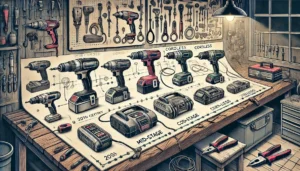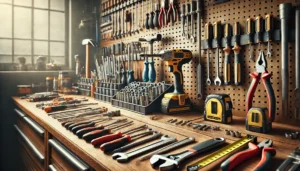Using machines to perform tasks that have been done manually still remains greatly needed by many industries. This includes the use of systems where compressed air is used as the means of transmitting and controlling energy. What used to be dull and difficult tasks are made simpler with machines, but recent developments in Pneumatics technology makes us question if there are still sectors that can benefit from it. In this article, we will look into what has been improved and its effects on the industry. By the end of this piece, you’ll realize that the idea might be overly pessimistic.
Advancements in Pneumatic Actuators
Virtually every sector can benefit from something as simple as the Pneumatic actuator. This is a basic device that changes the energy that is stored in the form of compressed air into energy that is purely Mechanical. New developments in actuators’ materials, such as modern cancelers and corrosion proof coatings have dramatically improved the rate of pneumatic machine components. Other industries that had the need to make precise movements such as automation, construction and even manufacturing have also had a range of other benefits. Like the suffering of high levels of corrosive materials or vibration, the new and improved actuators make it possible to boost the environment’s harshness while still remaining functional.
Integration of Smart Technologies
The use of sensors, IoT connectivity, and sophisticated control systems has changed the world of pneumatics. These smart technologies significantly boost the adaptability and monitoring capabilities of pneumatic systems. Operators can monitor essential factors like pressure, temperature, and flow rate in real-time which facilitates performance tracking while also allowing for automatic detection of problems systems that could potentially fail. This strategy not only increases overall efficiency but also makes it possible to perform predictive maintenance which significantly reduces operational expenses. The addition of AI-enhanced algorithms, on the other hand, improves the optimization process to achieve more system precision, advanced level functionality, and greater control in pneumatic systems.
Energy Efficiency Improvements
In the development of pneumatic systems, energy efficiency emerged as one of the most important innovations. Considering the rising global energy costs and growing environmental impacts, it is vital that the energy consumption of pneumatic systems is optimized. The most prominent improvement in this field is the innovation of actuator and component energy efficiency. Besides the previously mentioned advanced air compressors, there are also new optimized control systems and variable-speed drives. Important performance features can now make a reality even without the required energy usage. Significantly, these advancements assist in minimizing excessive waste by ensuring the correct quantity of compressed air is both used and released which leads to lower energy consumption.
Enhanced Control Systems
With increased advancements in control technology, aerospace engineering has noted significant progress in the precision and control accuracy of pneumatic systems. The integration of modern pneumatic systems has brought forth highly efficient control valves, regulators, and feedback loops which provide for finer adjustments and greater accuracy in applications. These said innovations greatly improve control in soft robotics, assembly lines, and packaging, where very smooth motion control and positioning is much needed. Algorithms are now used to smooth actuator movements by compensating wear discrepancies, elasticity, and friction.
Modular And Compact Designs
The constant need for integration of new features has resulted in the development of systems that are modular and compact. Traditional pneumatic systems both conducted the same processes but were poorly designed because they were bulky making it tough to install, maintain, or even use space effectively. Now with the rise of science and modular components, customized pneumatic systems can be developed that occupy less space. The advancement of material science and modern Day manufacturing techniques enable the efficient production of compact designs. These flexibility enabling compact systems can be easily adjusted to change operational requisites making them extremely cost effective.
Uses in Soft Robotics
Soft robotics has recognized the potential of pneumatic actuators where flexibility, adaptability and accuracy are needed the most. The new Folded Pneumatic Artificial Muscles (foldPAM), for example, is an attempt towards making pneumatic systems capable of performing sophisticated and adaptable motion activities. These actuators capture the soft biological nature of muscles so they can delicately handle fragile tasks, such as picking up delicate objects or doing refined work in tight places. The precise adaptability provided by soft robotics is advancing industries like healthcare, food processing, or even electronics assembly.
Improved System Integration
The advances in pneumatic systems integration with other technologies has been one of their leading uses. In particular, the integration of pneumatic systems with electrical, hydraulic and mechanical systems is now done with hybrid solutions. More advanced operations, combining the high force output of hydraulics, and the high speed of pneumatics, result from such integration. Such hybrid systems have multifaceted applications in manufacturing because they enable both rapid movement and high accuracy, which ultimately leads to improved efficiency and streamlined production processes.
Smart Maintenance and Diagnostics
Besides the real-time monitoring, the accuracy of pneumatic systems is being improved with the deployment of modern diagnostic tools and predictive maintenance technologies. The more sophisticated modern sensors and diagnostic software are allowing technicians to pinpoint and mitigate potential issues like leaks, fluctuation of pressure, or even component wear before they irreversibly damage the system. Adopting this maintenance approach allows not only for the reduction of downtime but also prolongs the life span of pneumatic components enabling the system to critically function.
Future Prospects
With the development of new resources and tools, it can be anticipated that there will be upgrades within the technology having the capacity to further improve the existing pneumatic technology. The invention of more efficient energy storage techniques and high capacity air tanks will most likely entail further conservation of energy. The continuous creation of modern materials and advanced fabrication methods, will result in more lightweight and stronger pneumatic components that will enable the utilization of these components in a wider scope of industries such as aerospace, medical technology, etc. Besides, it is expected that with the application of artificial intelligence and machine learning, control systems will be more precise and adaptable making the pneumatic system with more advanced automation and robotics.
Conclusion
The innovation in the domain of pneumatic technology has improved precision, control, and efficiency of pneumatic systems. The addition of smart technologies, energy-saving parts, improved control mechanisms, and miniaturization has broadened the range of use of pneumatics in various fields. With further development, pneumatic systems will become more important in automation, robotics, and other advanced technologies because they enable faster, more flexible, and economical solutions for industries. Companies that adopt these innovations will improve their operational effectiveness, lower expenses, and enhance their competitive edge in a fast-changing business environment.










